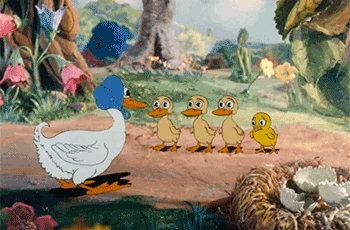Restored in 2023 by The Film Foundation’s World Cinema Project and Cineteca di Bologna in collaboration with the National Film Organization and the family of Tewfik Saleh. Special thanks to Mohamed Challouf and Nadi Nekol Nas. Funding provided by the Hobson/Lucas Family Foundation.

The World Cinema Project (WCP) preserves and restores neglected films from around the world. To date, 54 films from Africa, Asia, Eastern Europe, Central America, South America, and the Middle East have been restored, preserved and exhibited for a global audience. The WCP also supports educational programs, including Restoration Film Schools; intensive, results-oriented workshops allowing students and professionals worldwide to learn the art and science of film restoration and preservation. All WCP titles are available for exhibition rental by clicking "Book This Film."
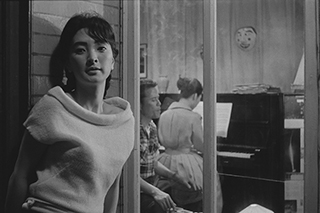
HOUSEMAID, THE
HANYO
Director: Kim Ki-Young
WRITTEN BY: Kim Ki-Young
EDITING: Kim Ki-Young
DIRECTOR OF PHOTOGRAPHY: Kim Deok-jin
PRODUCER: Kim Young-chul
MUSICAL DIRECTOR: Han Sang-Ki
ART DIRECTOR: Park Seok-in
STARRING: Lee Eunshim (Housemaid), Kim Jin-kyu (Dong-sik), Ju Jeung-nyeo (Dong-sik’s wife), Um Aeng-ran (Cho Kyung-hee)
COUNTRY OF PRODUCTION: South Korea
LANGUAGE: Korean with English subtitles
COLOR INFO: Black and White
RUNNING TIME: 110 minutes
PRODUCTION COMPANY: Korean Munye Films Co., Ltd.
PRODUCER: Kim Young-chul
Restored in 2008 by the Korean Film Archive (KOFA), in association with The Film Foundation's World Cinema Project and HFR-Digital Film laboratory. Additional restoration funded by Armani, Cartier, Qatar Airways and Qatar Museum Authority.
Kim Ki-young’s Hanyo, or The Housemaid, is one of the true classics of South Korean cinema, and when I finally had the opportunity to see the picture, I was startled. That this intensely, even passionately claustrophobic film is known only to the most devoted film lovers in the west is one of the great accidents of film history. I’m proud that the World Cinema Foundation is participating in the restoration and preservation of this remarkable picture. I am eager for more people to get to know and love The Housemaid.
–Martin Scorsese, February 2008
NOTES ON THE RESTORATION:
Hanyo has been restored digitally by the Korean Film Archive (KOFA) with the support of the World Cinema Foundation. The original negative of the film was found in 1982 with two missing reels, 5 and 8. In 1990 an original release print with hand-written English subtitles was found and used to complete the copy. This surviving print was highly damaged, and the English subtitles occupied almost half of the frame area. The long and complex restoration process has involved the use of a special subtitle-removal software and included flicker and grain reduction, scratch and dust removal, color grading.
Image: © Courtesy of Korean Film Archive

TREASURE, THE
NIDHANAYA
Director: Lester James Peries
WRITTEN BY: Tissa Abeysekera
EDITING: Lester James Peries, Edwin Leetin, Gladwyn Fernando
DIRECTOR OF PHOTOGRAPHY: M.S. Anandan
ADAPTED BY: G. B. Senanayake
MUSICAL DIRECTOR: Premasiri Khemadasa
ART DIRECTOR: J.A. Vincent Perera
STARRING: Gamini Fonseka, Malani Fonseka, Saman Bokalawala, Francis Perera, Mapa Gunaratne, Shanthi Lekha, Trilicia Gunawardene, Thilakasiri Fernando, J.B.L. Fernando, Thalatha Gunasekera, Kumarasinghe Appuhamy, K.L. Coranelis Appuhamy, Barry Whittington, Wijeratne Warakagoda
COUNTRY OF PRODUCTION: Sri Lanka
LANGUAGE: Sinhala
COLOR INFO: Black and White
RUNNING TIME: 108 minutes
PRODUCTION COMPANY: P.E.E. Anthonypillai for Ceylon Studios
Restored in 2013 by Cineteca di Bologna/L'Immagine Ritrovata laboratory, in association with The Film Foundation’s World Cinema Project, Lester James and Sumitra Peries, the National Film Archive of India, the National Film Corporation of Sri Lanka, Cinemas Ltd. Additional restoration elements provided by Degeto Films. Restoration funded by Doha Film Institute.
Nidhanaya is based on a dark tale by G.B. Senanayake and is considered a milestone film that people, even abroad, admire the most, albeit it is atypical of Lester James Peries’ customary family dramas. The story revolves around a psychotic killer yet is an underlying serious political study on the degradation of a class of society. In 1972 this film won the Silver Lion of St Mark at the 33th Venice International Film Festival and was selected as one of the outstanding films of the year, receiving a Diploma at the London Film Festival. It was also voted as the best film of the first 50 years of Sri Lankan cinema.
My most controversial film is Nidhanaya, which received a very positive reception at the Venice Film Festival. The most accurate critics highlighted that, despite its setting in 1911, this film holds a strong social and political value in denouncing the system. The character is trapped between two cultures: the Western/British one and his culture of origin—he is lost between two worlds. Unable to adapt to either one or the other, he absorbs the worse elements of the two cultures; the society changes and he goes insane.
- Lester James Peries
NOTES ON THE RESTORATION:
The restoration of Nidhanaya was made possible through the use of two key elements: a 35mm positive print struck from the original camera negative and held by Degeto Film, and a combined dupe negative preserved at the National Film Archive of India.
The prints were scanned at 4K resolution. After scanning, the image was stabilized and cleaned, and all wear marks were eliminated. Image grading recovered the richness of the original cinematography. The soundtrack was also digitally cleaned and background noise reduction was applied to reduce imperfections without losing the dynamic features of the original. The digital restoration produced a new 35mm internegative.
The World Cinema Foundation would like to thank the following individuals and organizations for their support: G R Padmaraj and Cinemas Ltd, National Film Corporation of Sri Lanka, National Film Archive of India, Shivendra Singh Dungarpur, Ravindra and Sam Randeniya, and Hubert Niogret.
Special thanks to Lester James Peries and Sumitra Peries for facilitating the restoration process.
Image: © Courtesy of National Film Corporation of Sri Lanka
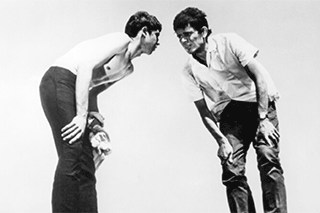
DUPES, THE
AL-MAKHDU’UN
Director: Tewfik Saleh
WRITTEN BY: Tewfik Saleh
EDITING: Farin Dib, Saheb Haddad
DIRECTOR OF PHOTOGRAPHY: Bahgat Heidar
STARRING: Mohamed Kheir-Halouani, Abderrahman Alrahy, Bassan Lofti Abou-Ghazala, Saleh Kholoki, Thanaa Debsi
COUNTRY OF PRODUCTION: Syria
LANGUAGE: Arabic with English subtitles
RUNNING TIME: 107 minutes
NOTES ON THE RESTORATION:
The 4K restoration used a 35mm dupe negative preserved by the Bulgarian National Film Archive (Bulgarska Nacionalna Filmoteka) and was completed in 2023 by L’Immagine Ritrovata laboratory.
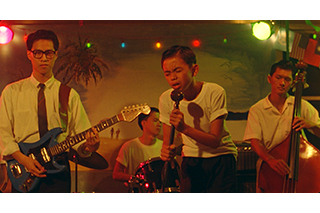
BRIGHTER SUMMER DAY, A
GU LING JIE SHAO NIAN SHA REN SHI JIAN
Director: Edward Yang
WRITTEN BY: Edward Yang, Yan Hangya, Yang Shunqing, Lai Mingtang
EDITING: Chen Bowen
DIRECTOR OF PHOTOGRAPHY: Zhang Huigong, Li Longyu
FROM: Central Motion Picture Corporation, Taipei
STARRING: Zhang Zhen (Xiao Si’r), Lisa Yang (Ming), Zhang Guozhu (Zhang Ju), Elaine Jin (Mrs Zhang), Wang Juan (Elder Sister), Ke Yulun (Airplane), Tan Zhigang (Ma)
COUNTRY OF PRODUCTION: Taiwan
LANGUAGE: Mandarin and Taiwanese with French and English subtitles
COLOR INFO: Color
RUNNING TIME: 237 minutes
PRODUCTION COMPANY: Yang and His Gang Filmmakers
SET DESIGNER: Yu Weiyan, Edward Yang
Restored in 2009 by Cineteca di Bologna/L’Immagine Ritrovata laboratory, in association with The Film Foundation’s World Cinema Project, the Central Motion Picture Corporation, and the Edward Yang Estate. Scan performed at Digimax laboratories in Taipei. Restoration funded by Armani, Cartier, Qatar Airways and Qatar Museum Authority.
It is easy to restore a film’s image, but much harder to revive that feeling of seeing a classic for the first time. Fifteen years ago, Edward Yang’s A Brighter Summer Day was released, heralding a new talent in world cinema. Each year since has further confirmed its status as a classic, but at the cost of increased wear and tear on the prints. Restoration is usually reserved for relics from decades ago. But sometimes we need to dust off recent memories to remind us how brightly the not too distant past shined. Thanks to the latest digital technology, we can seize these celluloid moments even as they begin to slip irrevocably from our grasp. In June of 2007 when he was only 59 years old, we lost Edward Yang forever. I’m very happy that A Brighter Summer Day has been restored so a new generation of filmgoers can feel the excitement of seeing it for the first time. –Wong Kar-Wai, May 2009
NOTES ON THE RESTORATION:
The restoration of the uncut version of A Brighter Summer Day used the original 35mm camera and sound negatives provided by the Edward Yang Estate and preserved at the Central Motion Pictures Corporation in Taipei. Due to the deterioration of the original camera negative an intermediate of the film printed at the time was also used. The digital restoration produced a new 35mm internegative.
Image: © Courtesy of Edward Yang Estate/CMPC
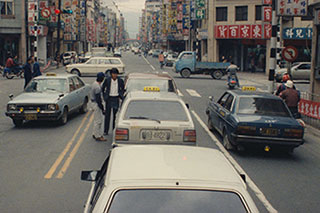
TAIPEI STORY
QING MEI ZHU MA
Director: Edward Yang
WRITTEN BY: Edward Yang, Hou Hsiao-hsien, Chu T’ien-wen
DIRECTOR OF PHOTOGRAPHY: Yang Wei-han
PRODUCER: Hou Hsiao- hsien, Lin Rong-feng
STARRING: Hou Hsiao-hsien (Lung), Tsai Chin (Chin), Lai Teh-nan (Chin's father), Chen Su-fang (Mrs. Mei), Wu Nien-Jen (Taxi driver), Ko I-Chen (Architect), Ko Su-wun (Gwan)
COUNTRY OF PRODUCTION: Taiwan
LANGUAGE: Madarin with English subtitles
COLOR INFO: Color
RUNNING TIME: 119 minutes
PRODUCER: Hou Hsiao- hsien, Lin Rong-feng
Restored by The Film Foundation’s World Cinema Project at Cineteca di Bologna/L’immagine Ritrovata laboratory in association with the Cinémathèque Royale de Belgique and Hou Hsiao-hsien.
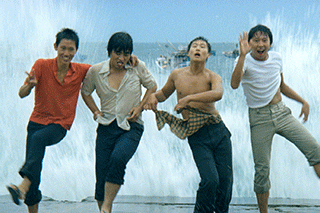
BOYS FROM FENGKUEI, THE
FENG GUI LAI DE REN
Director: Hou Hsiao-hsien
WRITTEN BY: T'ien-wen Chu
DIRECTOR OF PHOTOGRAPHY: Kun Hao Chen
SOUND: Duu-Chih Tu
STARRING: Chun-fang Chang, Shih Chang, Doze Niu, Chao P'eng-chue, Chung-Hua Tou, Li-Yin Yang
COUNTRY OF PRODUCTION: Taiwan
LANGUAGE: Mandarin with English subtitles
COLOR INFO: Color
RUNNING TIME: 101 minutes
Restored by the Cinémathèque Royale de Belgique in collaboration with Hou Hsiao-hsien and The Film Foundation’s World Cinema Project.
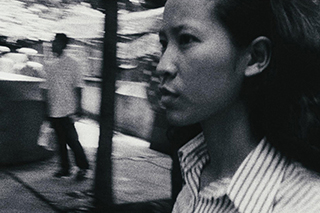
Mysterious Object at Noon
DOKFAH NAI MEU MAAN
Director: Apichatpong Weerasethakul
EDITING: Mingmongkol Sonakul, Apichatpong Weerasethakul
DIRECTOR OF PHOTOGRAPHY: Apichatpong Weerasethakul, Prasong Klimborron
PRODUCER: Gridthiya Gaweewong, Mingmongkol Sonakul
SOUND: Teekadetch Watcharatanin, Sirote Tulsook, Paisit Phanpruksachat, Adhinan Adulayasis
STARRING: Somsri Pinyopol, Duangjai Hiransri, To Hanudomlapr, Kannikar Narong, and the villagers of Thailand
COUNTRY OF PRODUCTION: Thailand
LANGUAGE: Thai
COLOR INFO: Black and White
RUNNING TIME: 88 minutes
PRODUCTION COMPANY: 9/6 Cinema Factory, Firecracker Films, Bangkok
PRODUCER: Gridthiya Gaweewong, Mingmongkol Sonakul
Restored in 2013 by the Austrian Film Museum and Cineteca di Bologna/L’Immagine Ritrovata laboratory, in association with The Film Foundation’s World Cinema Project, LISTO laboratory in Vienna, Technicolor Ltd in Bangkok, and Apichatpong Weerasethakul. Restoration funded by Doha Film Institute.
On his journey, the director hears a story which he then asks people to continue as they wish— like a game of Chinese Whispers (and relating also to the French Surrealists’ concept of the “cadavre exquis”). The original title, Dokfah nai meu maan, roughly translates as Heavenly Flower in Devil’s Hand. The name of that flower, Dokfah, is also the name of the woman who appears in the story-within-a-film as the teacher of a young paraplegic boy. The title is reminiscent of an archetypical Thai melodrama, but in the hands of the most imaginative re interpreter of national tradition, it becomes an epic meta-narrative.
I want to give the audience the freedom to fly or to float, to just let their mind go here and there, to drift, like when we sit in a train, listen to a Walkman, and look at the landscape. It is liberating, and also the audience understands that they are not watching a routine, three act narrative.
- Apichatpong Weerasethakul
NOTES ON THE RESTORATION:
The restoration of Mysterious Object at Noon utilized the 35mm duplicate negative with burned-in English subtitles deposited at the Austrian Film Museum by Apichatpong Weerasethakul in 2007. This negative was struck in 1999 from the (now lost) original 16mm camera reversal element.
The duplicate negative was scanned at 3K at the Austrian Film Museum. Painstaking digital restoration work was undertaken to remove dust, scratches and other visible marks while keeping the look (and the specific defects) of the original 16mm camera reversal material intact. Color correction was carried out at the LISTO laboratory in Vienna; the 35mm optical soundtrack negative was transferred at L’Immagine Ritrovata in Bologna; the digital sound restoration was performed at Technicolor Ltd in Bangkok.
The restoration was carried out in close collaboration with the filmmaker and completed in June 2013. The process produced a new 35mm internegative.
Image: © Courtesy of Apichatpong Weerasethakul
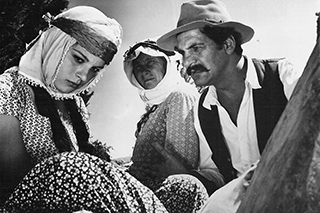
DRY SUMMER
SUSUZ YAZ
Director: Metin Erksan
WRITTEN BY: Necati Cumali, Metin Erksan Kemal Ínci, Ísmet Soydan
EDITING: Turgut Ínangiray
DIRECTOR OF PHOTOGRAPHY: Ali Ugur
PRODUCER: Ulvi Dogan
MUSICAL DIRECTOR: Ahmet Yamaç
SOUND: Turgut Ínangiray
STARRING: Ulvi Dogan (Hassan), Erol Tas (Osman), Hülya Koçyigit (Bahar)
COUNTRY OF PRODUCTION: Turkey
LANGUAGE: Turkish with French and English subtitles
COLOR INFO: Black and White
RUNNING TIME: 75 minutes
PRODUCER: Ulvi Dogan
Restored in 2008 by Cineteca di Bologna/L’Immagine Ritrovata laboratory, in association with The Film Foundation’s World Cinema Project, Ulvi Dogan, and Fatih Akin. Additional elements provided by the Friedrich Wilhelm Murnau Stiftung. Restoration funded by Armani, Cartier, Qatar Airways and Qatar Museum Authority.
Dry Summer is a film of passion. A passion for water as well as the obsessive passion created by forbidden love. […] Dry Summer is a film of captivity… Authorities at the time objected to Dry Summer representing Turkey overseas, which presented all kinds of obstacles when the film came to the Berlin Film Festival. The film walked away with the Golden Bear, but before success could even be celebrated it was ‘taken captive’ and completely forgotten for the next 45 years. Today, in these times of intellectually dry summers, when greed is driving humanity to the brink of starvation, this film could hardly be more valid. Dry Summer is one of the most important legacies of Turkish cinema, and thanks to restoration it can be re-discovered by the next generations of audiences all over the world. –Fatih Akin, May 2008
NOTES ON THE RESTORATION:
The restoration of Susuz Yaz used the original 35mm camera negative and the original 17.5 mm sound negative and recaptured the black and white film’s tonal nuances. The film’s producer, Ulvi Dogan, provided the prints. An interpositive preserved at the Friedrich Wilhelm Murnau Stiftung in Wiesbaden was used for the negative’s last missing reel. The opening and closing credits, missing from all available sources, have been digitally reconstructed.
Image: © Courtesy of Ulvi Doğan

LAW OF THE BORDER
HUDUTLARIN KANUNU
Director: Lüfti Ö. Akad
WRITTEN BY: Lüfti Akad, Yilmaz G Üney
EDITING: Ali Ün
DIRECTOR OF PHOTOGRAPHY: Ali Uğur
PRODUCER: Dadaş Film, shot in Yildiz Film Studios
MUSICAL DIRECTOR: Ali Uğur
FROM: Dadaş Film
STARRING: Yilmaz Güney (Hidir), Pervin Par (Ayse, the teacher), Hikmet Olgun (Yusuf), Erol Taş (Ali Cello), Tuncel Kurtiz (Bekir), Osman Alyanak (Dervis Aga), Aydemir Akbas (Abuzer), Atilla Erg ün (Zeki, first lieutenant)
COUNTRY OF PRODUCTION: Turkey
LANGUAGE: Turkish with French and English subtitles
COLOR INFO: Black and White
RUNNING TIME: 74 minutes
PRODUCER: Dadaş Film, shot in Yildiz Film Studios
Restored in 2013 by Cineteca di Bologna/L’Immagine Ritrovata laboratory, in association with The Film Foundation’s World Cinema Project, Dadaş Films, and the Turkish Ministry of Culture. Restoration funded by Doha Film Institute.
Turkish cinema in sixties took place in a dream world. The movies of that era refused to look directly at Turkish society. Hudutların Kanunu, on which Yılmaz Güney met director Lütfi Ömer Akad, is one of the movies that changed this state of affairs. Akad’s genuine creative vision influenced Güney’s style as an actor: one can easily see the difference in Güney’s acting before and after Hudutların Kanunu. Akad’s influence was a positive one. . .
Güney’s natural performance marked a change in Turkish Cinema. This was the beginning of what would later be called “New Cinema” in Turkey. With its powerful cinematography and its direct and realistic depiction of social problems, Hudutların Kanunu is one of the early milestones of Turkish cinema. Given the manner of storytelling and the style of photography, one might almost say that Akad’s film is a Western.
Hudutların Kanunu depicts vital problems in the society of South East Turkey. Lack of education, no agriculture, and unemployment compelled people to live by the “law of the border” (Hudutların Kanunu) – in other words, smuggling. Hudutların Kanunu underlines the importance of education, which is the crucial element of socio-economical progress in third world countries. It also helps us to understand the reasons behind the ongoing, veiled war along Turkey’s South East border. Forty five years ago, Lütfi Ömer Akad was alerting Turkish society of the likely consequences if preventive measures are not taken in time. He alerted us with a great and lasting film, Hudutların Kanunu.
(Fatih Akin, May 2011)
Ömer Lüfti Akad’s Hudutların Kanunu comes as a revelation to first-time viewers – a work of great visual and dramatic force, of terrific purity and ferocity. It was made during the year that its star and co-screenwriter, Yilmaz Güney, made his own directing debut. And it’s not surprising for first time viewers to learn that this stunning collaboration marked a shift in Turkish cinema, and ushered in what became known as “the director generation.” Once again, the World Cinema Foundation’s advisory board member Fatih Akin has brought us a great and inspirational film.
(Kent Jones, May 2011)
NOTES ON THE RESTORATION:
The restoration of Hudutlarin Kanunu was made possible through the use a positive print provided by Nil Gurpinar, daughter of the film’s producer, and held by the Turkish Ministry of Culture.
As this print is the only known copy to survive the Turkish Coup d’Etat in 1980 – all other film sources were seized and destroyed – the restoration required a considerable amount of both physical and digital repair. The surviving print was extremely dirty, scratched, filled with mid-frame splices and sadly missing several frames. Although the film was shot in black and white, it was also printed on color stock resulting in significant decay. The restoration work produced a new 35mm dupe negative.
The World Cinema Foundation would like to specially thank Fatih Akin for recommending this title, and Ali Akdeniz and Nurhan Sekerci for facilitating the restoration process.
Image: © Courtesy of Nil Gurpinar - Dadaş Films

RAID INTO TIBET
Director: Adrian Cowell
DIRECTOR OF PHOTOGRAPHY: Chris Menges
PRODUCER: George Patterson
COUNTRY OF PRODUCTION: UK
LANGUAGE: English/Tibetan with English subtitles
COLOR INFO: Black-and-White
RUNNING TIME: 28 minutes
PRODUCER: George Patterson
Restored by The Film Foundation’s World Cinema Project at Cineric Inc. laboratory in association with the Tibet Film Archive. Special thanks to the Cowell family.
In May 1964, three British filmmakers traveled with the Khampa guerrillas over a 20,000-foot pass into occupied Tibet from the remote Tsum region of Nepal and captured dramatic footage of an ambush on a Chinese military convoy. The footage was smuggled out and edited two years later in London, and officially released in 1966 to critical acclaim. Shot by Oscar-winning cinematographer Chris Menges (THE READER, LOCAL HERO, THE KILLING FIELDS), this documentary short is an important historical artifact, representing the only known footage of armed Tibetan resistance fighters in combat with the Chinese.
NOTES ON THE RESTORATION:
Restoration work was completed at Cineric in New York. The original 16mm camera negative was cleaned, repaired, then wet-gate scanned at 4K to eliminate scratches and other minor defects in the emulsion. The image was subsequently stabilized and digitally cleaned to remove dust, deep scratches, and other visible marks. Because of the extreme conditions in Tibet during the filming, Cineric implemented exposure compensation at the initial scanning of the raw material. Grading was performed by colorist Paul Ensby and supervised by Chris Menges at Technicolor London.
The original sound negative was also scanned and digitally cleaned to reduce background noise and remove clicks and pops. A new 35mm internegative with sound has been made for preservation, along with 35mm prints for conservation and access. In addition, a new HD master and DCP will be produced for digital screenings.
